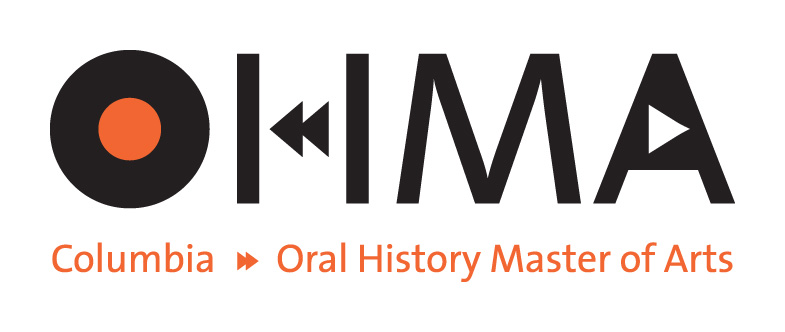On Thursday, February 14, Doug Boyd, Ph.D. spoke in open dialogue to the current Oral History Master of Arts (OHMA) cohort before addressing a larger crowd at an event open to the public. Boyd currently serves as Director of the Louie B. Nunn Center for Oral History at the University of Kentucky Libraries, and is renowned for his extensive work on Oral History in the Digital Age. Watch a video of his talk here.
In the early component of the session, Boyd traced his career from early studies in the discipline of history and an interest in music to a focus on folklore and audio restoration. While addressing the specifics of his background in the field, Boyd excitedly spoke about his graduate work in noise reduction while digitizing the tapes of Henry Glassie. Citing direct experience, Boyd noted how ambient noise can be mistaken for the standard ‘pop’ well known to analog, as was the case when Glassie’s tapes picked up the sound of burning peat during field recordings across Ballymenone of County Fermanagh in the north of Ireland.
Speaking to the writing of his most recent book, Crawfish Bottom: Recovering a Lost Kentucky Community, Boyd detailed the process of compiling a historical portrait that includes time period documents alongside oral histories. He especially discussed how differences in interviewing style can change the type of information that is unearthed and the perspective conveyed about hidden stories within a community.
From this initial discussion, the OHMA cohort was given an energizing perspective on the multitude of career paths that lead to work in the field of oral history. We ourselves make up a diverse group of graduate students, ranging from those who were introduced to the discipline while studying history or anthropology in college to professionals and filmmakers who have long been working out in the field. Boyd’s honesty and insight provided a point of enthusiasm, especially for the countless possibilities that the digital age brings to oral history interviewing.
The second part of the talk included a comprehensive look at the Oral History Metadata Synchronizer (OHMS), a program Boyd has had a hand in developing, that matches oral history audio files with their written components in online displays. Of particular interest to archives that are digitizing their interviews for public access, the coming release of OHMS as an open source program can alleviate some of the pressures of transcription by providing audio and text link ups based on indexed metadata.
Boyd spoke with passion about the possibility of reaching out to the communities with whom the oral histories were conducted to engage them in the process of tagging the interview themes through OHMS. While such crowdsourcing sounds appealing, it is another question whether it is reliable, practical, and ethical when it comes to managing the contents of oral history interviews. But these, too, are the issues that one must already consider when contemplating the release of interviews to digital access on the internet. Certainly, legality in terms of the narrator’s rights and intentions must be examined before providing such services.
The program is still in the development stage as a plug in for Omeka, a publishing platform popular for online museum and oral history exhibitions, but is currently utilized by the University of Kentucky Libraries. OHMS shares functional similarities to the qualitative analysis software NVivo with the exception that the focus in this case is on making the interviews available for public access rather than research processing. Interestingly, it also offers a different approach to other services in the field, most notably, in comparison to the work of Michael Frisch’s The Randforce Associates, LLC, which instead segmentizes the oral histories into passages in order to manage recurrent themes throughout collections.
Overall, Doug Boyd provided a refreshing balance between exciting the crowd with the impressive opportunities of the OHMS program and providing relatable reflections on the progression of research and education in the digital age. While the release date of OHMS for open access has not been finalized just yet, us oral historians will be waiting with bated breath until that day arrives.
By OHMA student Erica Fugger










